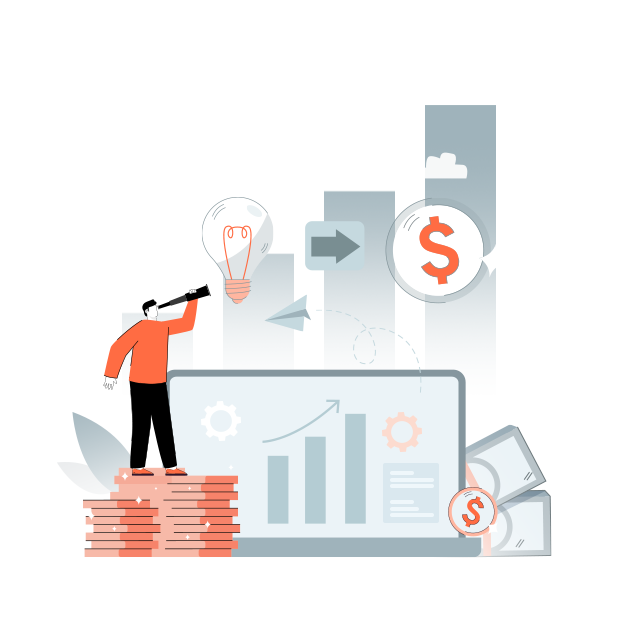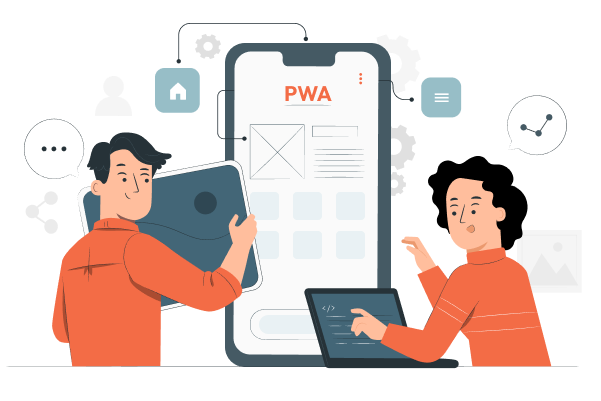Introduction
Fintech is disrupting traditional financial models and creating new entrepreneurial opportunities.
Before fintech, we used conventional piggy banks to save money, but creating a bank account, managing money, and completing transactions—all of which used to be labor-intensive and manual—have all been made easier.
Fintech business models have integrated money and technology together to tackle these time-consuming challenges. We can now quickly access all fintech services, receive insurance, track transactions, and more.
If you’re an entrepreneur eying success in the fintech industry, stay ahead of your game with these top five proven fintech business models.
What is a fintech business model?
A Fintech business model is a business strategy for a financial technology company that includes an operational strategy, revenue streams, and target customers. Fintech business models use technology and digitization to improve the financial sector services.
Integrating technology into various financial services and giving people easy access to various financial services and products has greatly simplified fintech operational processes.
Top 5 fintech business models
With advanced technology, the financial industry has significantly improved the customer experience over time. Here are the top 5 fintech business models that are changing the globe.
- E-wallet
This business model functions as a payment processor and mimics traditional banking services. Your virtual currency can be transferred to the wallet, and you can use the funds you’ve added to the wallet to make purchases from the services of your choice.
You can use the funds to buy goods and services and pay a seller who accepts digital payments.
This business model offers customers convenient payment options and charges a small cost to the businesses in the form of a Merchant Discount Rate (MDR). Companies profit from a floating fee by earning interest on money held in consumer or company accounts.
A few examples of digital wallets are American Express, Apple pay, Paytm, PhonePe, Ezetap, Freecharge, Venmo, Square Cash, Google Wallet/GPay, etc.
- Alternative credit scoring
This fintech approach is intended for small company owners that do not satisfy the criteria for eligibility based on traditional credit scoring, preventing them from accessing loans.
Alternative credit scoring methods have removed the limitation that self-employed entrepreneurs experienced. If you are a startup, you can request various alternative data and synchronize the findings with certain common records for a comprehensive credit review.
When running a lending platform, you must employ an alternative credit scoring algorithm since it allows you to access a bigger client base and will also assist you in recognizing eligible customers.
- Alternative insurance underwriting
Fintech has made enormous advancements in the insurance industry, benefiting low-income populations.
This is more like alternative credit scoring, and it works through several advanced computing algorithms that use other data points, such as lifestyle data, financial information, and medical history.
Insurance companies and insurance sales agents establish a link via underwriting. Insurance underwriters use computer tools to analyze risks and decide whether to approve the applicants.
These insurance fintech organizations, when integrated with AI algorithms, can decide whether or not to offer insurance, what terms and conditions to add, and what alternative payment methods to use.
- Digital Banking
The digital banking model relies on automation and web-based services, which involves the development and integration of APIs, to provide banking services and financial transactions outside the limits of traditional practice.
It combines technology with banks to access banking services like checking account balances, transferring funds, paying bills, and cashing checks.
Customers can complete banking operations remotely without visiting the bank by using the website or mobile app of the respective bank. Some digital banking services offer chatbots or virtual assistance to their customers.
- Peer-to-peer lending
Without the aid of a traditional banking institution, people can lend and borrow money through peer-to-peer (P2P) lending. This lending platform connects borrowers with individual or institutional lenders who lend money.
The platform is a facilitator, managing loan origination, repayment, and servicing. As the P2P platform enables lenders to avoid the fees associated with bank lending, borrowers often receive loans at cheaper interest rates than traditional bank loans.
P2P lending platforms can link various borrowers and lenders while charging a fee for the repayment transaction and the lenders can earn higher returns with other low-risk investments.
Pros and cons of Fintech business models
Fintech models provide enhanced customer services to a broad customer base. Here are some fintech models and their benefits.
- Benefits financially
- Quick technical assistance and easy-to-access credits
- Loyal customer base and retention
- Democratization of the Economy
- Automation helps save costs
- Highly convenient
- Improved financial inclusion than the traditional banking service
Fintech company concepts do have certain drawbacks. Here are a few downsides of using fintech services.
- Liable to security threats and data leaks
- Lack of regulations
- Technological dependence can limit the service during downtimes.
- Lack of physical offices limits the reach as it is accessible only via smart devices.
Top globally successful fintech business model
- Alternative Credit scoring: Nova Credit, Canopy, and Cortera are some leading credit scoring institutions benefiting small business owners..
- E-wallet or Payment processors: PayPal, Stripe, Venmo, American Express, Apple Pay, Paytm, PhonePe, Ezetap, Freecharge, Square Cash, and Google Wallet/GPay have transformed the way we pay for products and services online by providing safe and easy payment options.
- Alternative Insurance Underwriting: Next Insurance and Clover Health are two top fintech businesses that benefit insurance for customers.
- Peer-to-peer (P2P) lending: Lending Club, Prosper, and Zopa allows individuals and institutions to lend and borrow money directly to each other, unlike the traditional banking procedure.
- Digital Insurance Platforms: PolicyPal, Lemonade and Klara have successfully used technology to simplify and automate the purchase, management, and claims process of insurance.
Conclusion
Fintech business models might differ in the services they offer but they all rely on technology to increase the effectiveness, affordability, and accessibility to their customers. These fintech models have made a massive impact on the banking industry by providing effective financial solutions to large sectors of people.
As technology advances and digital transformation takes hold in the financial services sector, more new fintech business models are expected to emerge in the future.
How NeoITO can help you build a fintech product?
NeoITO is proficient in building scalable products for startups working in different industries – from fintech to real estate. Our team has helped entrepreneurs scale their businesses to an 8-figure valuation within a year. If you’re looking to build a winning Fintech product, consult our experts NeoITO now. We’d be happy to assist you in every stage of the development – from ideation to product release and beyond.
FAQ
What are the four categories of fintech?
Fintech is expanding with increasing demand in various sectors and meeting people’s needs. Here are the major categories of fintech services.
- Digital lending
- Digital payments
- Blockchain
- Digital wealth management
What are the biggest trends in fintech?
Here are a few top technologies and trends that will shape the FinTech sector.
- Open banking
- The IoT
- Regulatory tech
- Biometric authentication
- AI
- Block chain
- Cloud computing
- Virtual cards
- Robotic process automation
- Voice payments
How does the fintech model work?
Fintech models operate in different ways like online lending, payment processing, personal finance management, insurance tech, blockchain and crypto.
What is the biggest challenge in fintech?
Although fintech is growing with high demand and holds a large customer base there are challenges like data security breaches, lack of compliance with government regulations, lack of mobile and tech expertise, and difficulty in fetching big data and integrating blockchain and integration with legacy systems.
What are two key success factors for a fintech company?
Customer experience and implementing unique, innovative fintech solutions are two key factors contributing to the success of the fintech industry.




